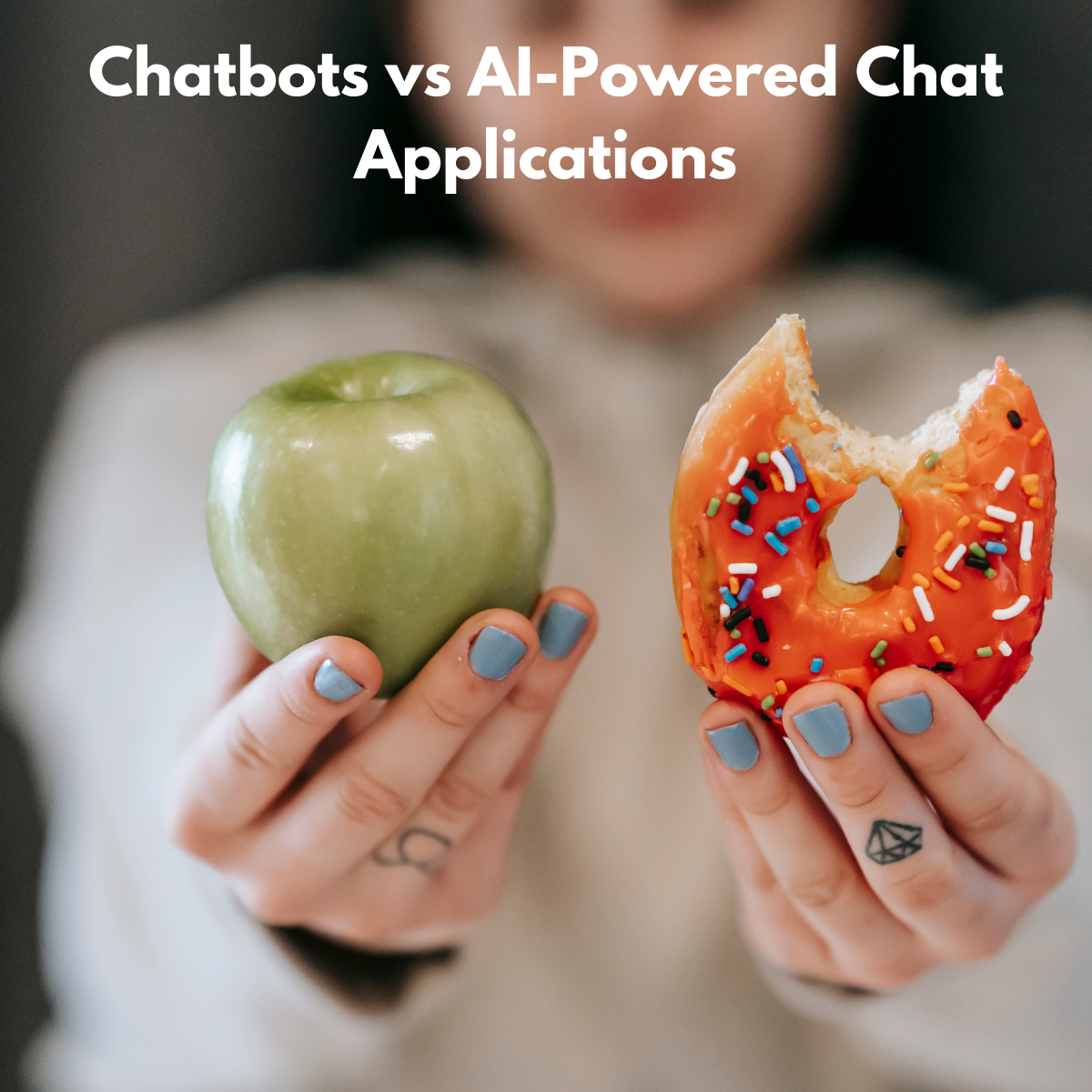Posted At: Aug 20, 2025 - 412 Views

🍎 Chatbots vs 🍏 AI-Powered Chat Applications: Understanding the Differences
In today’s fast-paced digital environment, conversational technologies have become a cornerstone of modern customer engagement. Businesses are using them to answer questions, solve problems, and guide customers — all in real time.
Two of the most widely adopted solutions in this space are chatbots and AI-powered chat applications. While the terms are sometimes used interchangeably, they represent two very different levels of conversational capability.
Let’s break down what sets them apart — and why it matters for your business.
🍎 What Are Chatbots?
A chatbot is a software program designed to simulate conversation with a user — typically via text or voice. They can be:
- Rule-based (following decision trees)
- Scripted (with pre-written answers to expected questions)
Chatbots are best suited for specific, repetitive tasks like:
- Answering Frequently Asked Questions (FAQs)
- Booking appointments or reservations
- Providing simple troubleshooting guides
- Sharing store hours, policies, or directions
Key Features of Chatbots:
- Scripted Responses – Operate from a fixed set of pre-programmed answers.
- Limited Context Understanding – Cannot “remember” earlier parts of the conversation beyond a single query.
- Task-Focused – Great at narrow, repetitive processes but struggle with complex requests.
📌 Example:
A basic restaurant chatbot can handle “What’s your menu?” or “Book a table for two at 7 PM” — but it won’t understand “What gluten-free dishes do you recommend for a romantic dinner next Friday?”
🍏 What Are AI-Powered Chat Applications?
AI-powered chat applications go beyond rule-based logic by using Natural Language Processing (NLP), machine learning (ML), and sometimes Generative AI to create dynamic, intelligent conversations.
They’re designed not just to respond, but to understand, adapt, and learn over time.
These applications can:
- Comprehend natural language and conversational tone
- Use context awareness to recall previous messages
- Continuously improve by learning from past interactions
Key Features of AI-Powered Chat Applications:
- Natural Language Understanding (NLU) – Can interpret human-like queries in different formats and phrasings.
- Context Awareness – Remembers earlier parts of a conversation to deliver relevant follow-ups.
- Continuous Learning – Improves accuracy and personalization over time.
📌 Example:
An AI-powered chat app for an e-commerce store can handle “I ordered a shirt last week, but it’s too small. Can I exchange it?” by checking the customer’s order history, explaining the return process, and suggesting the correct size.
Feature-by-Feature Comparison
Feature | 🍎 Chatbots | 🍏 AI-Powered Chat Applications |
Complexity | Simple, rule-based logic | Complex, driven by NLP & ML |
Response Generation | Predefined scripts | Dynamic, context-aware |
Learning Capability | No learning — fixed rules only | Learns from interactions over time |
User Experience | Basic, predictable | Conversational, engaging |
Use Cases | FAQs, bookings, simple workflows | Customer support, sales, personalization |
Context Handling | Limited | Advanced context understanding |
When to Use Each Technology
Best Use Cases for Chatbots:
- Simple FAQ automation
- Appointment booking
- Order tracking
- Basic lead qualification
- Small businesses with low complexity needs
Best Use Cases for AI-Powered Chat Applications:
- Complex customer support with varied queries
- Personalized product recommendations
- Sales assistance and lead nurturing
- Technical troubleshooting
- Scenarios requiring ongoing conversation memory
The Bottom Line
While chatbots offer an affordable, straightforward way to automate repetitive interactions, AI-powered chat applications bring a new level of intelligence, adaptability, and personalization to customer engagement.
Choosing between them depends on:
- Your business goals
- Complexity of customer needs
- Budget and technology readiness
For many organizations, the ideal approach is starting with a chatbot for basic automation, then upgrading to AI-powered chat as customer expectations and business complexity grow.
